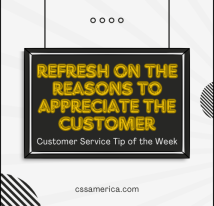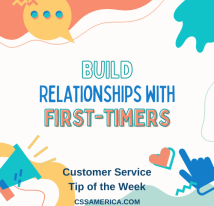One of the more interesting processes we go through with some clients is the development of Customer Service Standards. One might think that the expectations that organizations have of their staff are pretty consistent when it comes to customer service and relationship-building. However, the Standards are often unique because the organizations are unique. Their Core Values are unique. Their purpose is unique. And their customers are unique.
We helped one of our clients develop their expectations of staff, and the acronym RELATE lent itself nicely to the description of these expectations. Here’s a quick summary:
- Relate – Treat all courteously/fairly. Be inclusive, open to and appreciative of the diversity of the community and the customers. Be professional in representing the organization in appearance, interactions, and in showing respect for the privacy of others.
- Educate – Understand the organization well enough to effectively serve others. Get to know the customers and their needs, educating them about the organization and their service experience.
- Listen – Acknowledge others and those needs; be patient, communicate clearly, and listen so they feel valued and important, striving to address their need right the first time.
- Act – Own the service experience, taking responsibility for being prompt/responsive to the needs and issues of others. Help others, and hold yourself accountable for your actions and on behalf of co-workers.
- Team-up – Work with others in the organization to address collective goals and customer needs – guiding others to the right resource when needed. Understand your role, be involved and trustworthy, sharing information and ideas.
- Enjoy – Be friendly and welcoming, proactively engaging others in a natural, enthusiastic, and attentive manner. Convey the energy, active nature, and positivity that we hope to see from our customers.
Relate, Educate, Listen, Act, Team-up, and Enjoy! Where are you and your teammates strong in delivering these Standards, and where could you improve?
Do a little self-evaluation so you can better RELATE to your customers.
Signup for FREE Tips! Contact Us More Resources for You Visit Our Home Page
























